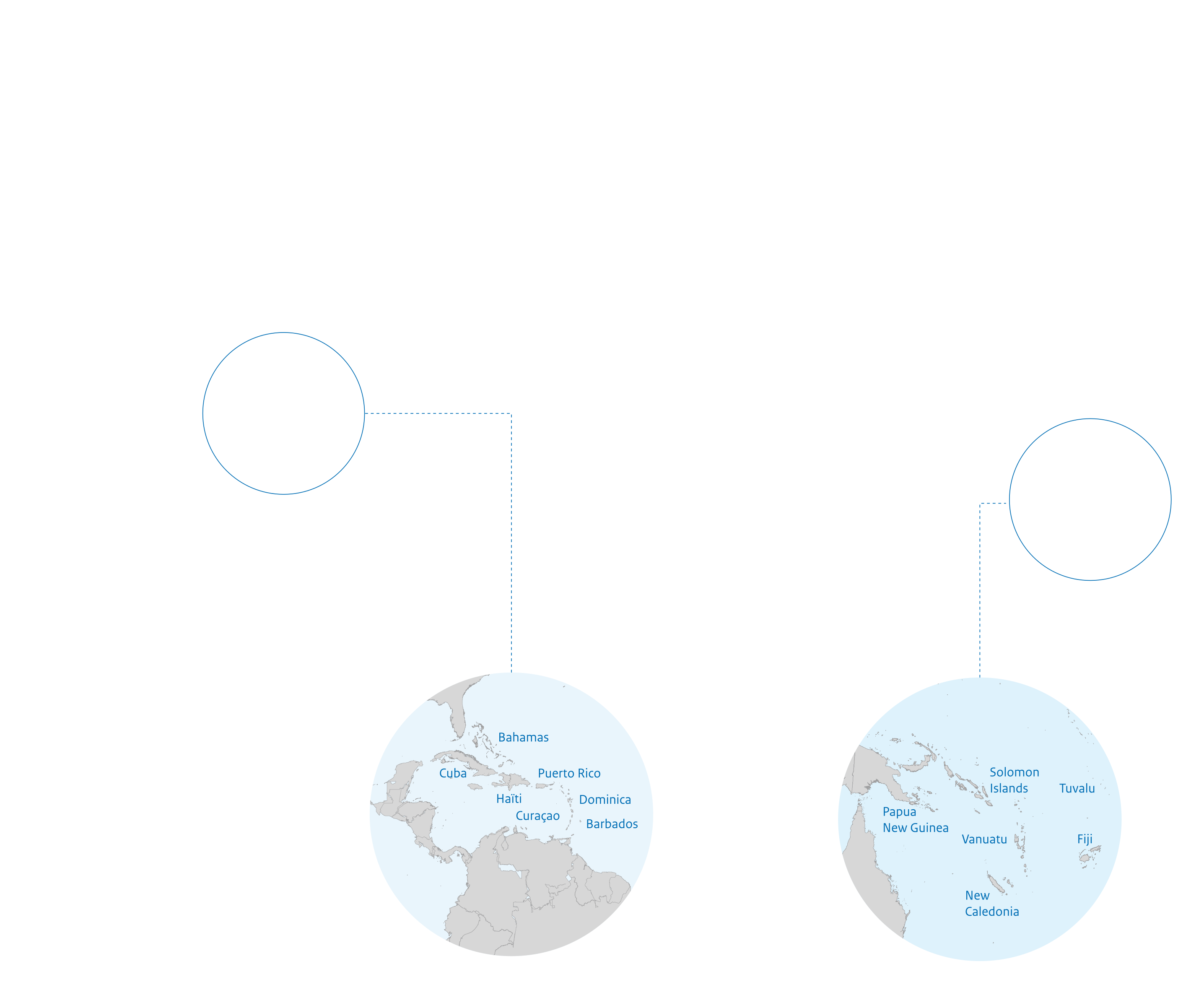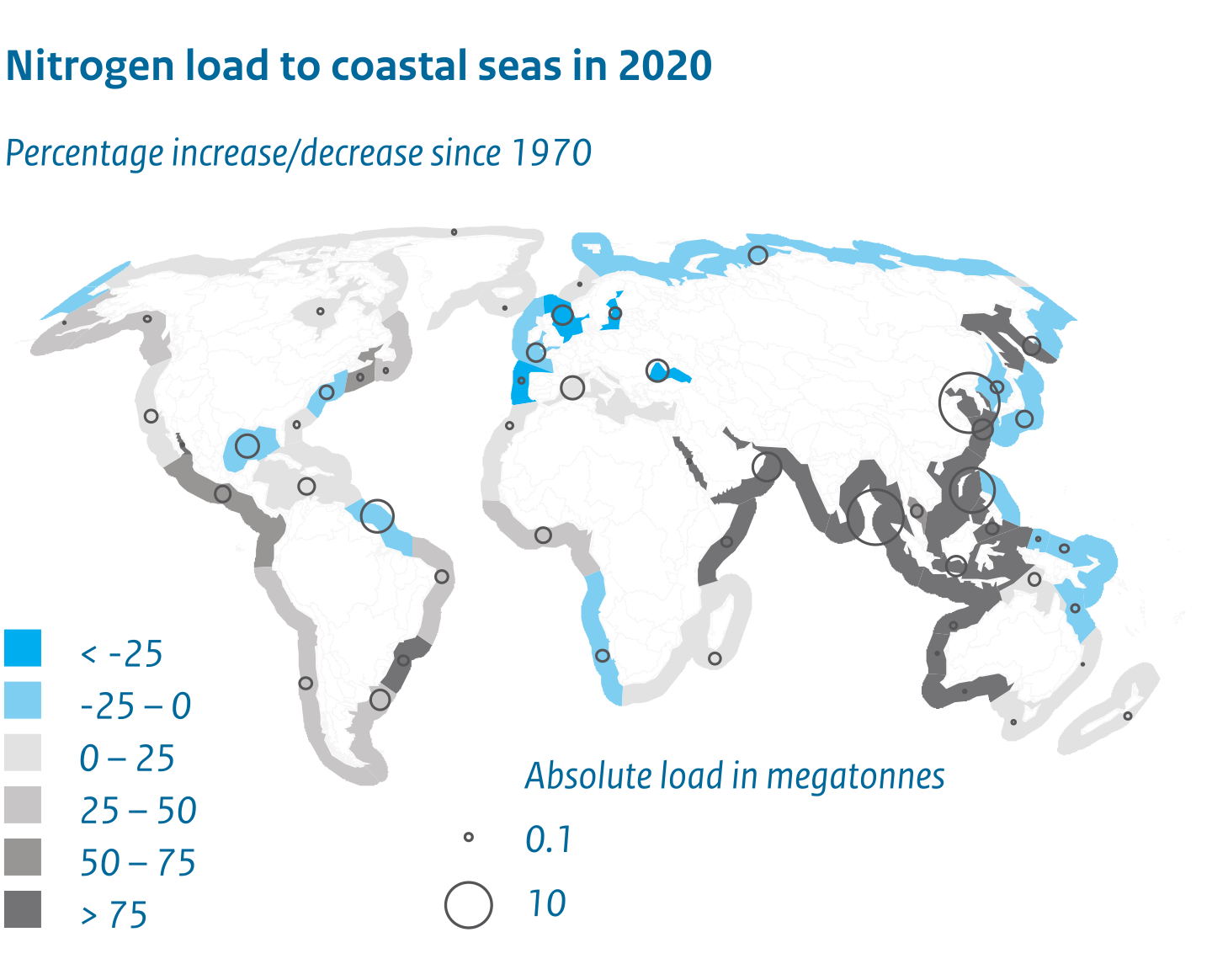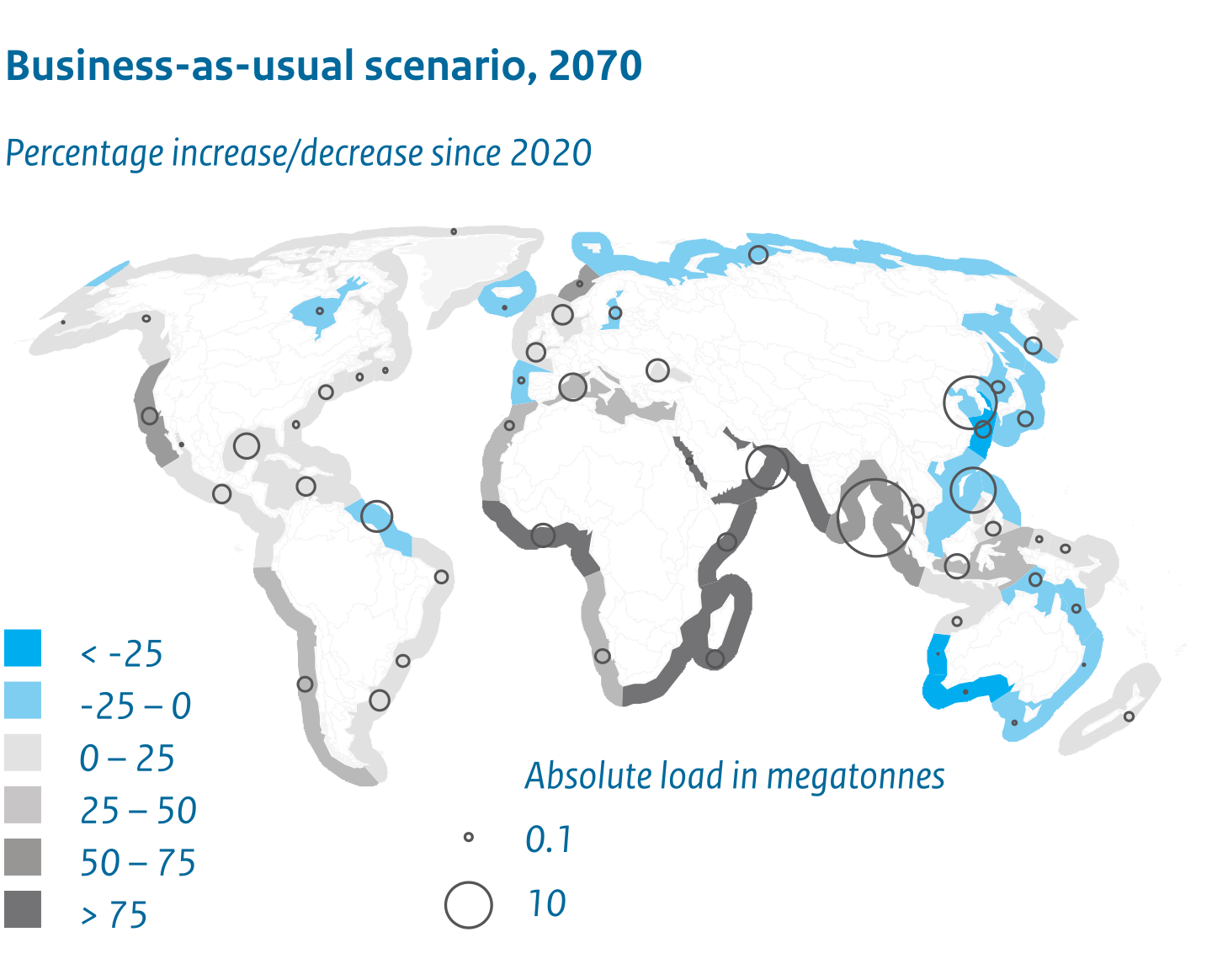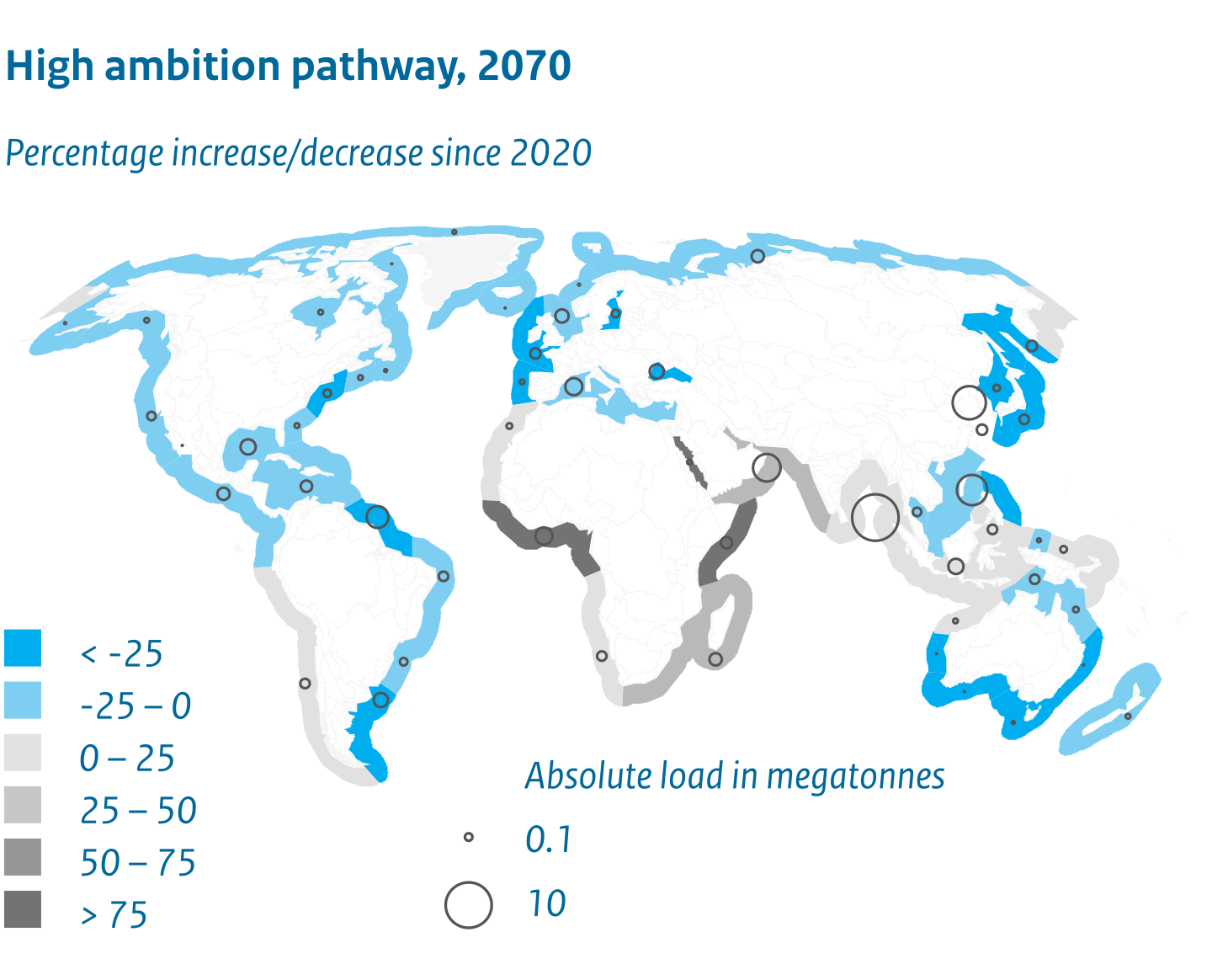The geography of future coastal water challenges
Shortread in 15 minutes
- The global population is projected to reach 9.6 billion by 2070
- 3 billion people will be living in deltas and coastal zones
- Of which 0.07 billion in Small Island Developing States
- 2.5 billion in cities
- 0.5 billion in rural areas
The future of our
Deltas and Coasts
A story in 4 acts
ACT 1
Setting the Scene
A growing coastal population is facing the impacts of climate change. Deltas and coastal zones are home to hundreds of millions of people, many of them living in cities. These people are facing the consequences of climate change and human activities, including sea level rise and pollution.
Cities will increasingly become centres of population growth and economic development.
Cities will increasingly become centres of population growth and economic development.
Cities will increasingly become centres of population growth and economic development.

Cities will increasingly become centres of population growth and economic development. This strong growth, especially in Asia and Sub-Saharan Africa, will challenge both water provision, flood protection and the reduction in water pollution.
In addition to deltas and coastal zones, Small Island Developing States (SIDS) are facing significant water- and climate-related challenges.
These challenges include protecting the population against extreme weather events and coastal flooding, and reducing coral bleaching, nutrient pollution of coastal seas, saline intrusion into terrestrial systems and the degradation of terrestrial and marine ecosystems.
ACT 2
Future Coastal Water Challenges
Two examples of water- and climate-related challenges in deltas, coastal zones and Small Island Developing States are coastal flood risk and nutrient pollution of coastal seas. We quantified four visions of the future in 2070, compared with 2020: a business-as-usual scenario and three ambition pathways (i.e. low, moderate and high).
These examples are a selection of current and future water- and climate-related challenges. There are many more challenges, for example in river basins, that are just as big or bigger, but those are outside the scope of this shortread.
Act 2 - Future Coastal Water Challenges - Example 1
Coastal Flood risk
Sea level rise, changes in storm surges and high peak river discharges strongly increase the vulnerability of low-lying coastal areas and deltas. The Small Island Developing States are already facing the most immediate threat of sea level rise — which is putting millions of people at risk of displacement.
Source
The rate of future sea level rise is highly uncertain due to uncertainties in achievements to mitigate global warming and due to the complexity of the forces driving sea level rise.
In many deltas and coastal zones, the extraction of groundwater and fossil fuels is causing subsidence. The combination of subsidence and sea level rise is the relative sea level rise (i.e. the rise of the sea level with respect to the level of the land).
Subsidence increases coastal flood risk and is the greatest in densely populated deltas in Asia.
Source
In natural systems, rivers transport sediments from the mountains to the sea where these sediments are deposited, thus creating deltas and coastal zones.
Over the past century, many dams were built in rivers for hydropower, irrigation and water regulation. These dams trap a large part of the sediment in the upstream reaches of rivers. In addition, sand and gravel is being mined in downstream river reaches for the construction of buildings and infrastructure. While more sand is needed in deltas and coastal zones to counter sea level rise and subsidence, less sand is reaching the coast.
Source
Act 2 - Future Coastal Water Challenges - Example 2
Nutrient Pollution



Source
Nitrogen controls eutrophication in coastal marine ecosystems. Over the past 50 years, nitrogen loads to coastal seas have increased in most of the world. The increase has been the largest in Asia, with over 75%.
Europe is a positive exception, with a decrease in nitrogen loads of more than 25% in some of its coastal seas, due to improvements in municipal and industrial wastewater treatment in recent decades.
Under a business-as-usual scenario, the trend of increasing nitrogen loads is projected to continue in most of the world's coastal seas between now and 2070.
The strongest increase is projected for Africa and South Asia. In parts of Southeast Asia and Australia, the trend of increasing loads in previous decades will turn into a decrease, whereas for European seas the opposite will be the case.
A substantial decrease in nutrient emissions to coastal seas can be achieved if measures are taken under a high ambition pathway. In Africa and parts of Asia, however, nutrient loads will continue to increase.
Nutrients cause large-scale algal blooms that, once they sink and decompose, deplete the water of oxygen. In many coastal seas, the risks of toxic algal blooms and oxygen depletion will remain high. This is because of population growth, urbanisation of deltas, and continued release of nutrients from agriculture.
Small Island Developing States (SIDS) depend heavily on their coasts and marine resources for their livelihood and economic growth. Nutrient overload contributes to coastal degradation, which can affect coastal fisheries and aquaculture, tourism and coastal protection.
Key Message
Water challenges in deltas, coastal zones and rivers are closely linked; solutions to coastal challenges require that we also look at rivers and their catchments.
Flood risk is projected to increase predominantly in Asia. Asia accounts for 85% of the global population living in deltas at an elevation of less than 10 metres above mean sea level. The built-up areas in Asia's deltas are growing faster than in deltas elsewhere in the world (McGranahan et al., 2023).
The economy and food supply of Small Island Developing States are both highly vulnerable to the pollution of their coastal seas.
ACT 3
The Way Forward
We can bend these trends of increasing flood risk and nutrient pollution. This requires fundamental changes in how we use the land and freshwater resources.
Act 3 - The Way Forward - Example 1
Coastal Flood risk
Flood risk can be reduced by improving flood protection and thus reducing the hazard, or by reducing levels of exposure or vulnerability of the population and their assets. Our high ambition pathway for 2070 includes a combination of these strategies:
increasing flood protection by raising dykes and levees and restoring vegetation in the coastal zone to dampen waves,
reducing the exposure levels by restricting urban and industrial development,
and lowering vulnerability by dry-proofing buildings.
Percentage of the Population Exposed to Flooding
Percentage of the Population Exposed to Flooding
Percentage of the Population Exposed to Flooding
Source
Mortensen, E. (2023). The potential of global coastal flood risk reduction using various DRR measures. Natural Hazards and Earth System Sciences, doi.org/10.5194/nhess-2022-284.
Vousdoukas, M.I. (2023). Small Island Developing States under threat by rising seas even in a 1.5°C warming world. Nature Sustainability, doi.org/10.1038/s41893-023-01230-5.
Without modifications to existing flood protection, future flood risks are projected to increase strongly, predominantly in South and Southeast Asia and in Sub-Saharan Africa.
However, a substantial reduction in flood risk can be achieved under the high ambition pathway, in which measures are taken to reduce flood risk.
By the end of this century, the part of the population that is exposed to coastal flooding, each year, will be especially large in the Small Island Developing States. The low-lying islands are highly vulnerable to sea level rise.
In many densely populated deltas and coastal regions, subsidence contributes more to relative sea level rise than absolute sea level rise.
This subsidence is mostly due to groundwater abstraction. A strong reduction in this abstraction could structurally decrease or even halt subsidence. This requires reducing our dependence on groundwater resources, for example through less abstraction for irrigation, reducing surface water pollution, reusing fresh water and desalinating seawater. The more measures we take, the higher the level of our ambition pathway.
The Mekong Delta is a telling example.
The Mekong Example
The Mekong Example
The Mekong Example
Source
Minderhoud, P. et al. (2020). Groundwater extraction may drown mega-delta: projections of extraction-induced subsidence and elevation of the Mekong delta for the 21st century. Environmental Research Communications 2(1), 011005.
Under the business-as-usual scenario, annual groundwater abstraction is projected to increase by 4%. As a result, subsidence remains substantial, with several millimetres per year, in large parts of the delta.
Under a low ambition pathway, in which groundwater abstraction is kept at current levels, the subsidence rate is projected to decrease in the long term.
Under a moderate and high ambition pathway, in which groundwater abstraction is reduced by 50% to 75%, the rate of subsidence is projected to decrease already in the coming years.
Act 3 - The Way Forward - Example 2
Nutrient pollution of coastal seas
Total nutrient emissions from cities and agriculture can be significantly reduced to levels below that of the current situation.
Improving the quality of coastal waters will require great efforts in upstream areas, with a focus on fertiliser use in agriculture and technical improvements in sewage treatment plants.
The level of nutrient emissions to coastal seas remains high, however, even under a high ambition pathway. In many coastal seas, nutrient pollution is here to stay.
Key Message
Yes, we can take major steps in improving the environmental conditions of deltas and coastal zones. However, wicked problems remain. For instance:
- Especially the population of the Small Island Developing States is highly vulnerable to sea level rise. The effectiveness of risk-reduction strategies for these islands is limited due to their low elevation.
- More hydropower dams are projected to be built for the green energy transition. These dams will trap part of the sediments that are needed in deltas and coastal zones to counter sea level rise and subsidence.
- The continued nutrient run-off from agricultural lands remains high, and rivers subsequently carry these nutrients to the already heavily polluted coastal waters.
ACT 4
No time to waste!
Source
- Donoghue, J.F. (2011). Sea level history of the northern Gulf of Mexico coast and sea level rise scenarios for the near future. Climatic Change 107(1):17-33.
- Turner, R.E. et al. (2018). Sea-level rise tipping point of delta survival. Journal of Coastal Research 34(2): 470-474.
- LEGOS in: WMO (2022). State of the Global Climate 2022.
- IPCC (2019). IPCC Special report on the ocean and cryosphere in a changing climate. Cambridge University Press, Cambridge, UK, and New York, NY, USA, 702 pp.
What if the past is the key to the future?
Over the past 20,000 years, sea levels have risen by about 120 metres due to melting of the ice caps of the last ice age.
A switch from land gain to land loss by 2100
Several studies indicate that the past may indeed be the key to the future. A recent study of over 6,000 deltas, for instance, illustrates that a shift from land gain to land loss may result, once the rate of sea level rise reaches 5.5 mm per year.
Observations 1985-2015
Observations 1985-2015
Low-end scenario 2100
Moderate scenario 2100
High-end scenario 2100
Source
Nienhuis, J.H. and R.S.W. van de Wal (2021). Projections of global delta land loss from sea-level rise in the 21st century. Geophysical Research Letters 48, e2021GL093368.
From 1985 to 2015, delta land gain has slowed down mainly because of sea level rise.
Even under a low-end climate change scenario, conditions in many deltas are projected to switch from land gain to land loss between now and the end of this century.
The moderate scenario in this study is the most likely projection of future climate change and sea level rise. Under this scenario, land loss is projected to dominate over land gain by the end of this century, illustrating that sea level rise is the dominant driver that will determine the future of our deltas.
Under a high-end scenario, accelerating sea level rise may lead to the disappearance of up to 5% of the total global delta area by 2100.
Key Message
The acceleration of sea level rise will determine the future of our deltas. At the global scale, fifty years from now, we may start losing deltas and low-lying coastal areas. However, the time scale on which they will erode is similar to the time scale on which they have formed, which is hundreds to thousands of years.
Act 4
Final Thought
McGranahan et al. (2023):
‘The very existence of deltas is a symptom of a relatively stable climate — and hence sea levels. For many cities, the same coastal deltaic locations that once gave them an economic edge may eventually spell their downfall.’